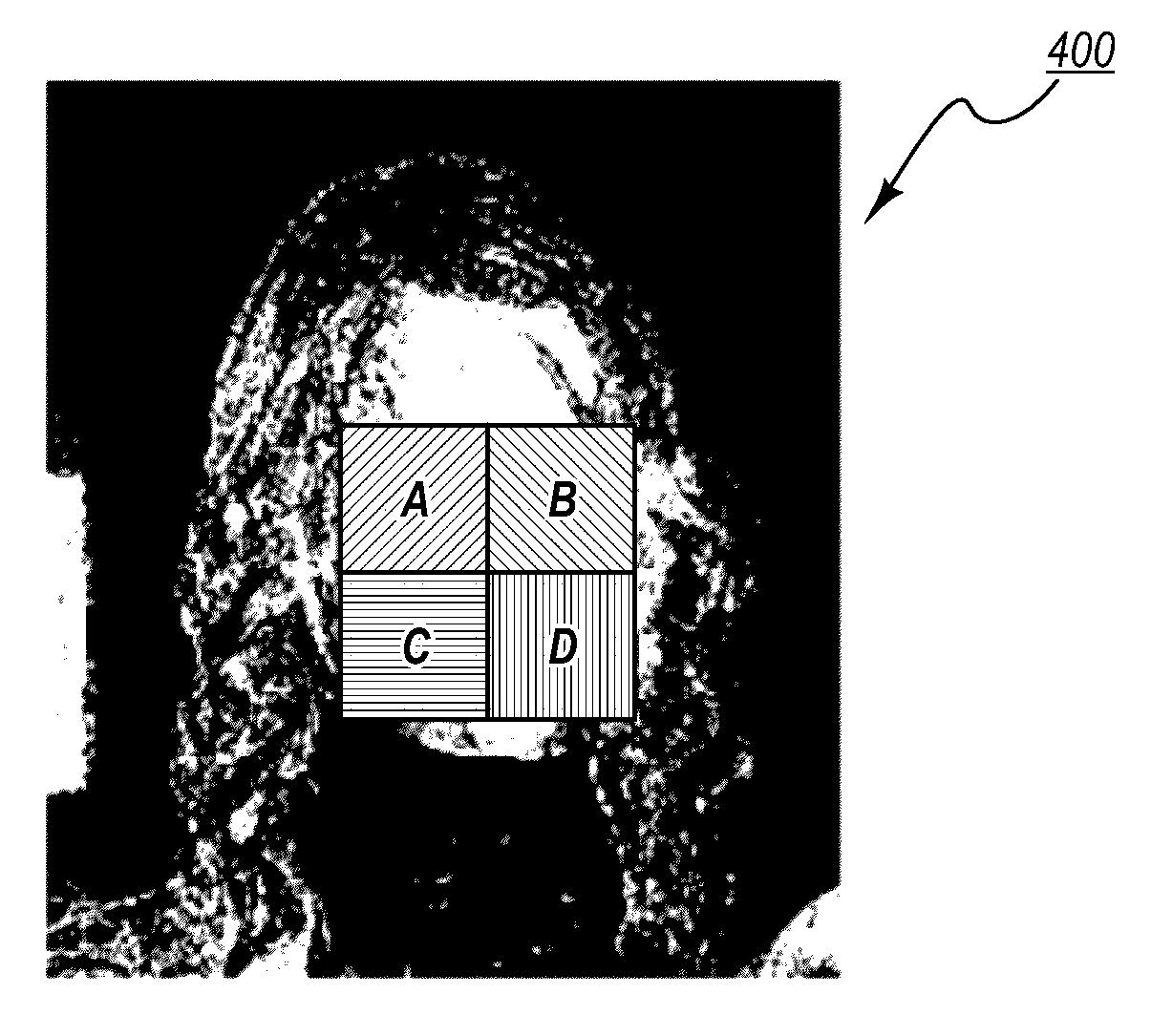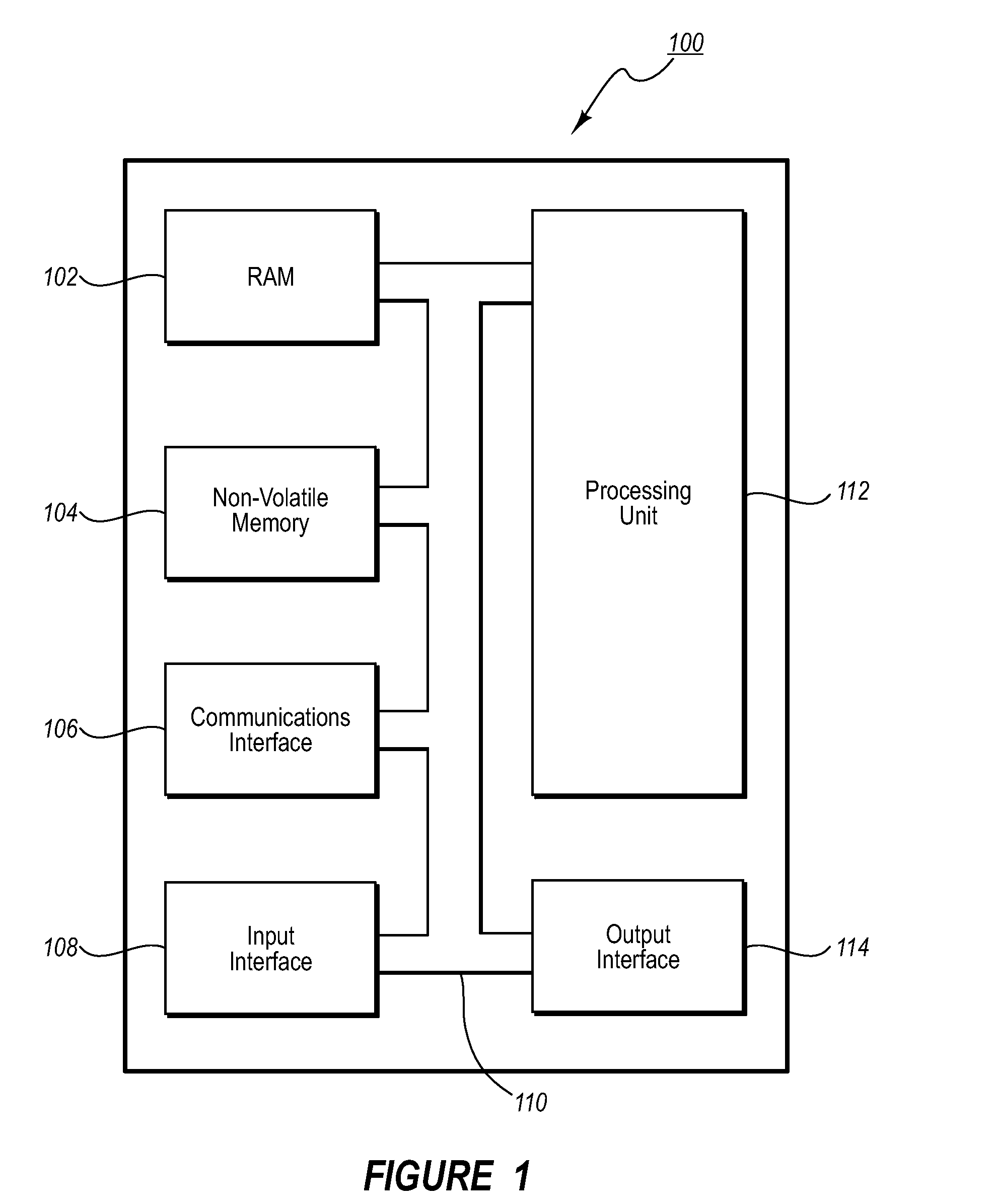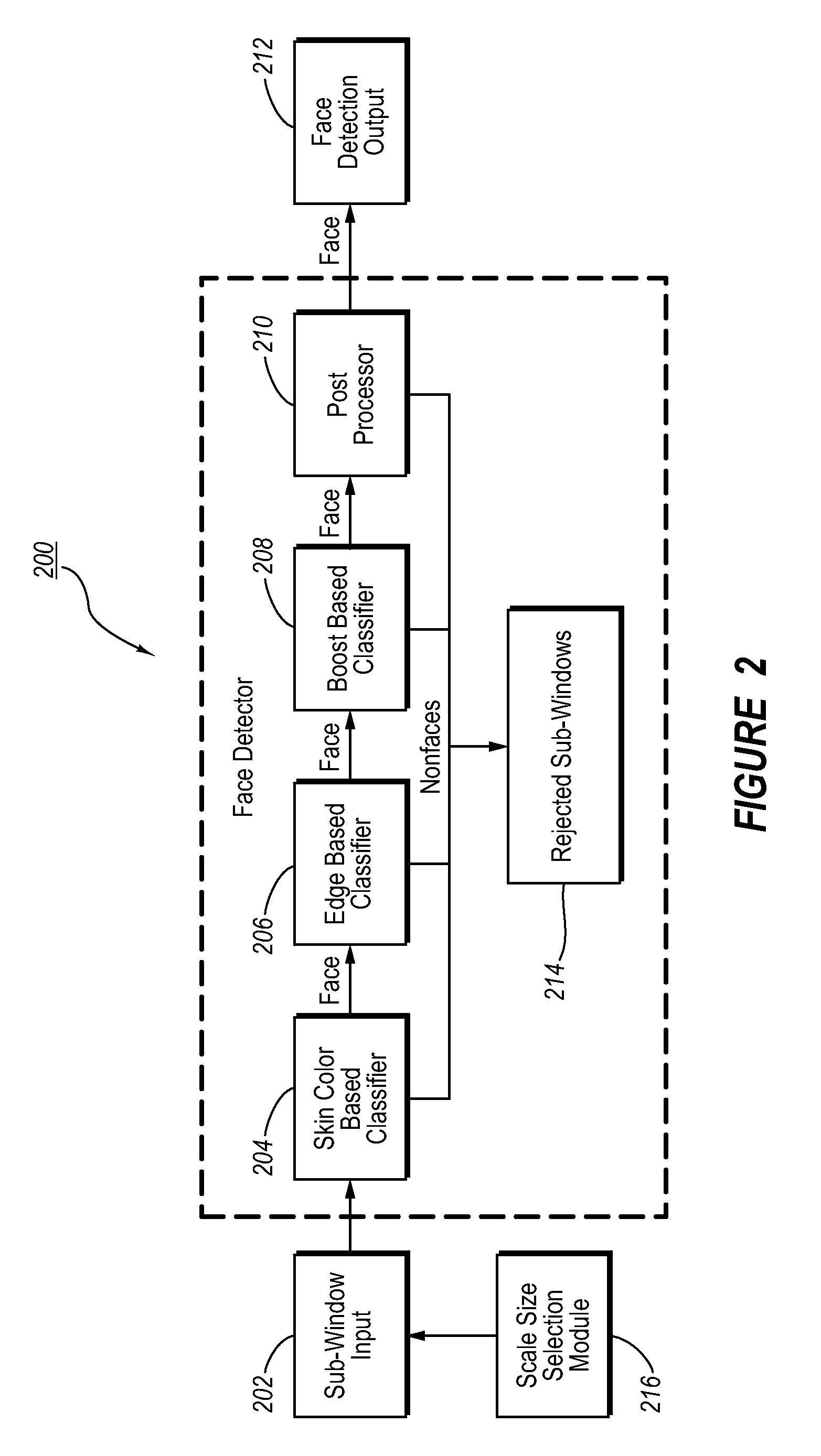Adaptive Scanning for Performance Enhancement in Image Detection Systems
- Summary
- Abstract
- Description
- Claims
- Application Information
AI Technical Summary
Benefits of technology
Problems solved by technology
Method used
Image
Examples
Embodiment Construction
[0020]In the following detailed description of various embodiments of the invention, reference is made to the accompanying drawings which form a part hereof, and in which are shown by way of illustration specific embodiments in which the invention may be practiced. It is to be understood that other embodiments may be utilized and structural changes may be made without departing from the scope of the present invention.
[0021]In the following description, an example embodiment of a method and apparatus for face detection in a digital image is provided. The illustrated example uses a two phase process for scanning an input image: 1) a coarse detection phase; and 2) a fine detection phase. In an illustrated example, during the coarse detection phase, the non-face regions of the image are scanned at a large step to preserve computational resources. During the fine detection phase, the face regions of the image are scanned at smaller step to achieve an accurate detect rate, while still mai...
PUM
 Login to View More
Login to View More Abstract
Description
Claims
Application Information
 Login to View More
Login to View More - R&D
- Intellectual Property
- Life Sciences
- Materials
- Tech Scout
- Unparalleled Data Quality
- Higher Quality Content
- 60% Fewer Hallucinations
Browse by: Latest US Patents, China's latest patents, Technical Efficacy Thesaurus, Application Domain, Technology Topic, Popular Technical Reports.
© 2025 PatSnap. All rights reserved.Legal|Privacy policy|Modern Slavery Act Transparency Statement|Sitemap|About US| Contact US: help@patsnap.com



